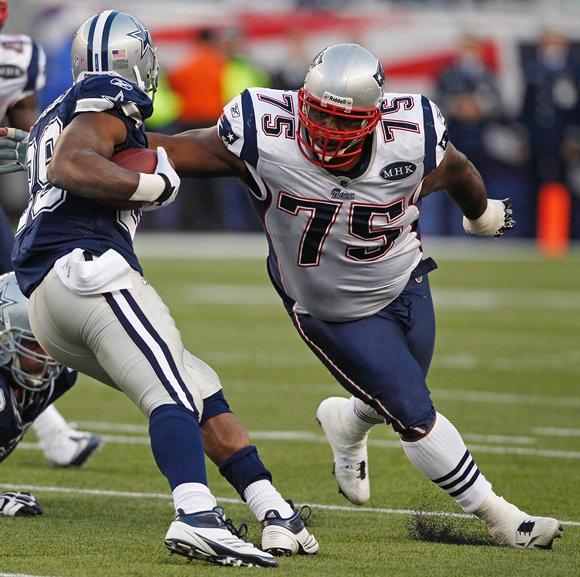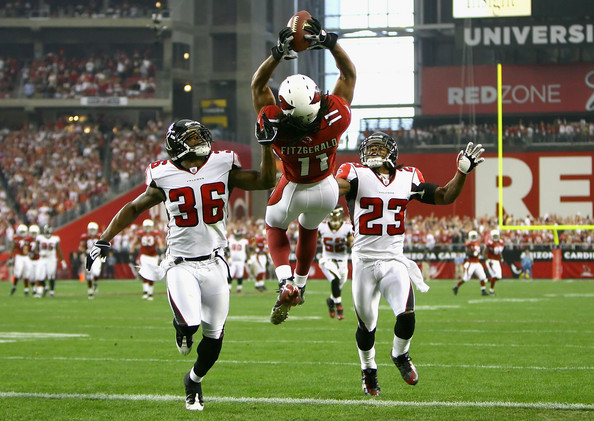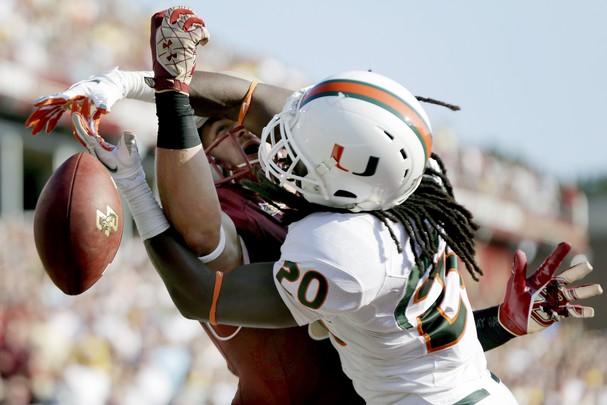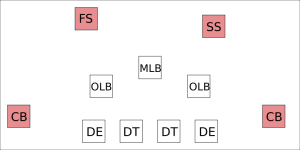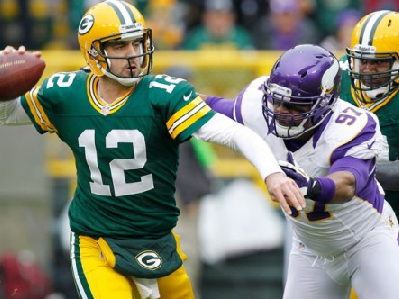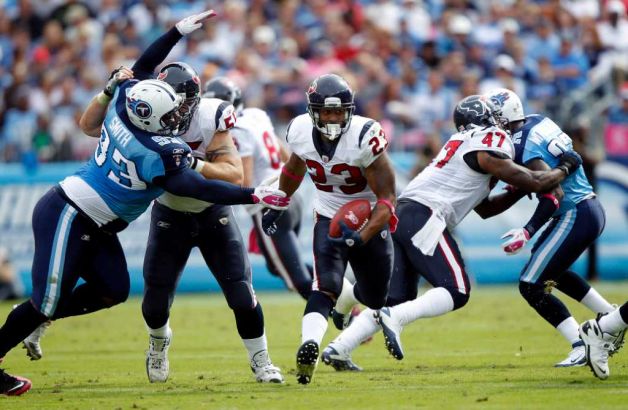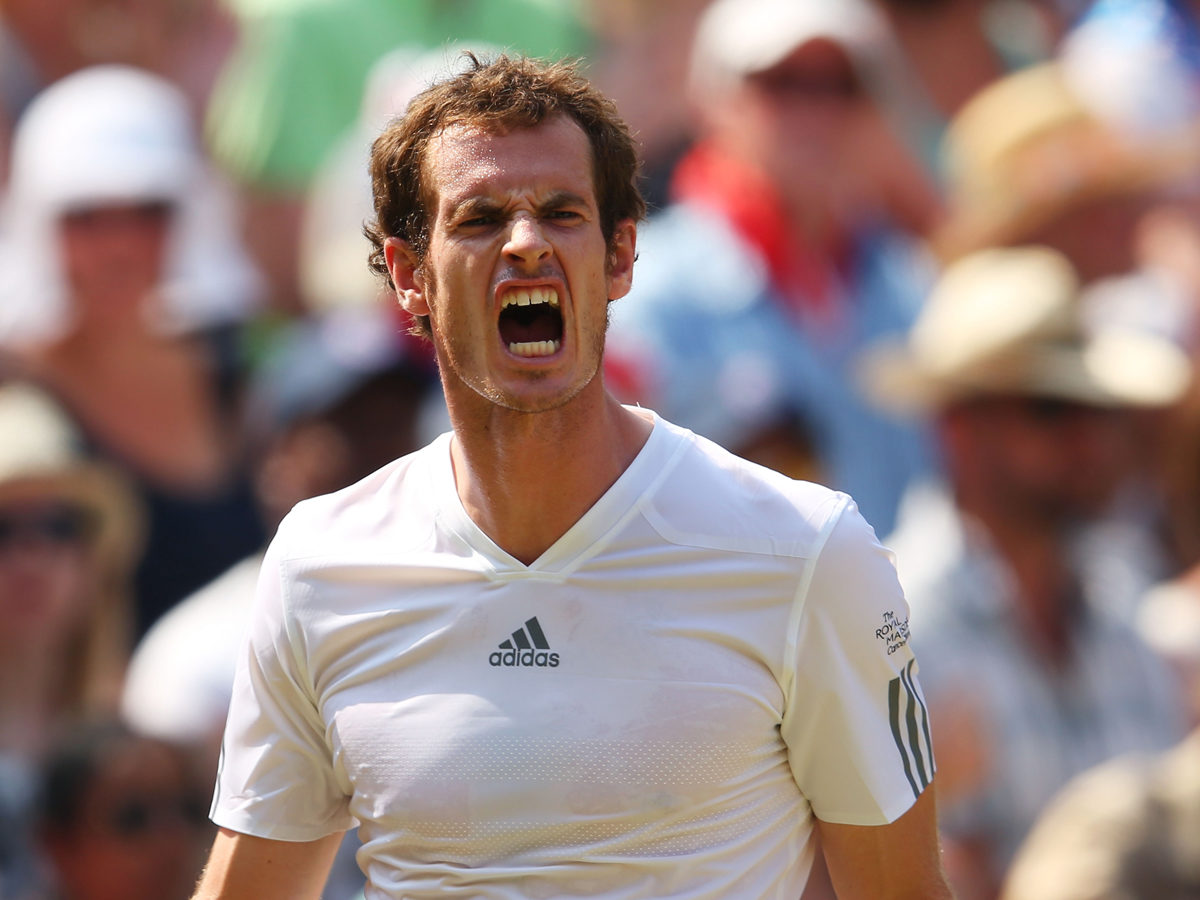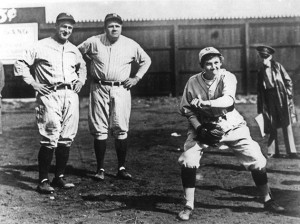In preparation for the rapidly approaching football season, Dear Sports Fan is publishing a series about the basics of football. Some previous posts answer the questions: Why Do People Like Football, How do I Begin to Enjoy Football, Why Are People Obsessing About Fantasy Football Now, and What’s a Down in Football. This post is one in a series that explores each position on a football team. So far we’ve covered What is a Running Back in Football, What is a Quarterback in Football, What is a Defensive Back in Football, and What is a Wide Receiver in Football. Today we give the big guys some with What is a Defensive Lineman in Football?
What is a Defensive Lineman in Football?
A defensive lineman is about as close to the common stereotype of a football player as a slavering bloodthirsty ogre as you will find anywhere on a football field. Defensive linemen are strong and relentlessly aggressive. Although defensive linemen in the NFL average between 260 and 310 pounds, they start each play in a sprinter’s stance. As soon as the play starts, they burst off the line and… most of the time, smash directly into the offensive lineman opposite them. Their goal? Get around the offensive lineman and hit the quarterback. If they can’t get around (or just for the joy of it) they will try to knock the person blocking them down to the ground and run over him to hit the quarterback. If they don’t run the guy over, driving the him backwards into the quarterback works just as well.
It’s not all seek and destroy for a defensive lineman though. When the opposing offense calls a run play, the tables can turn on a defensive lineman pretty quickly. During a run play, offensive lineman smash into the defensive linemen[1] to make space for their running back. On these plays, the defensive lineman has to do his best to hold his ground and deny the running back any room to run.
There are two positions in the defensive lineman category: end and tackle. The responsibilities of these two positions vary significantly based on which of the two basic defensive formations a team plays, which are known as the 4-3 and the 3-4. We will probably do separate posts on common formations sometime, but here’s a four sentence explanation to help with understanding defensive linemen.
A total of seven defensive players play near the offensive line in both of these formations. Players who usually start a play in a sprinter’s stance right on the line of scrimmage are defensive linemen, and players who start standing up (usually a few feet to a few yards back from the line of scrimmage) are called linebackers. A 4-3 defense plays with four linemen and three linebackers. A 3-4 defense plays with three linemen and four linebackers.
 4-3 Defensive Ends
4-3 Defensive Ends
These are the stars of the defensive lineman firmament. The defensive end always lines up on the outside of the defensive line. In a 4-3 defense the two defensive linemen are usually the two defensive players closest to the edge of the offensive line. On most plays this means they have the best shot of anyone to get around the offensive line and sack the quarterback. A common strategy for 4-3 defensive ends is to use speed or trickery to get around their opponent to the outside so 4-3 defensive ends tend to be the fastest and lightest of all defensive linemen.
4-3 Defensive Tackles
Defensive tackles are the linemen on the interior of the defensive line.[2] In a 4-3 formation there are two of them between the two defensive ends. Bigger and slower than 4-3 defensive ends, these guys still have a reasonable chance to get to a quarterback because of the focus the offensive line has to pay to the threatening defensive ends. That said, the main job of the 4-3 defensive tackle is to be good at burrowing through their counterparts on the offensive line to disrupt the flow of running plays that rely on open lanes for the running back.
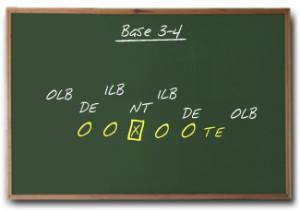 3-4 Defensive ends
3-4 Defensive ends
3-4 defensive ends are usually somewhere between 4-3 ends and 4-3 tackles in responsibility, physicality, and talent. In the 3-4 formation, the two outside linebackers are the closest of the seven defenders to the edge of the offensive line and therefore they are the ones who have the best shot at hitting the quarterback. One responsibility that 3-4 defensive ends have that is almost completely unique to them among defensive linemen is to cover an offensive player who is trying to catch a pass. Plays that call for this are called “zone blitzes” and their purpose is to confuse the offensive line by reversing the usual roles of defensive linemen and linebackers. Linebackers rush at the quarterback like banshees while 3-4 defensive ends take a short hiatus from smashing into the offensive line and nimbly step back to prevent a pass getting to its intended target.
Last year, one 3-4 defensive end, J. J. Watt of the Houston Texans, was so incredibly good at hitting the quarterback that he made the impact of a 4-3 defensive end while allowing his team to only play three defensive linemen. When he was on it was almost like his team had an extra defensive player on the field. He is pretty unique.
3-4 Defensive Tackles or Nose Tackles
3-4 defensive tackles are mountains disguised as men. These guys average 300 pounds. Called “nose tackles” because they are the odd center of a three man defensive line, their main responsibility is to stay in place while two or three offensive linemen try to push them backwards. This is called “occupying blockers” and it allows the defenders around them better odds at creating a positive play for the defense. Aside from being physically crazy, nose tackles have got to be really interesting people psychologically — willing to fight against two or three people over and over again with a draw being the most fantastically positive outcome they can expect.
- For the offensive linemen, this is a case of doing unto others as they would do unto them. This either proves that football is either extremely Christian or extremely not Christian. I’m not sure which.↵
- In the diagram, one of the two 4-3 defensive tackles is identified as a NT or Nose Tackle. We cover nose tackles in the 3-4 defensive tackle section. I’ve literally never heard anyone call one of the two 4-3 defensive tackles a nose tackle but I’m writing this blog, not whoever created that stupid graphic!↵

